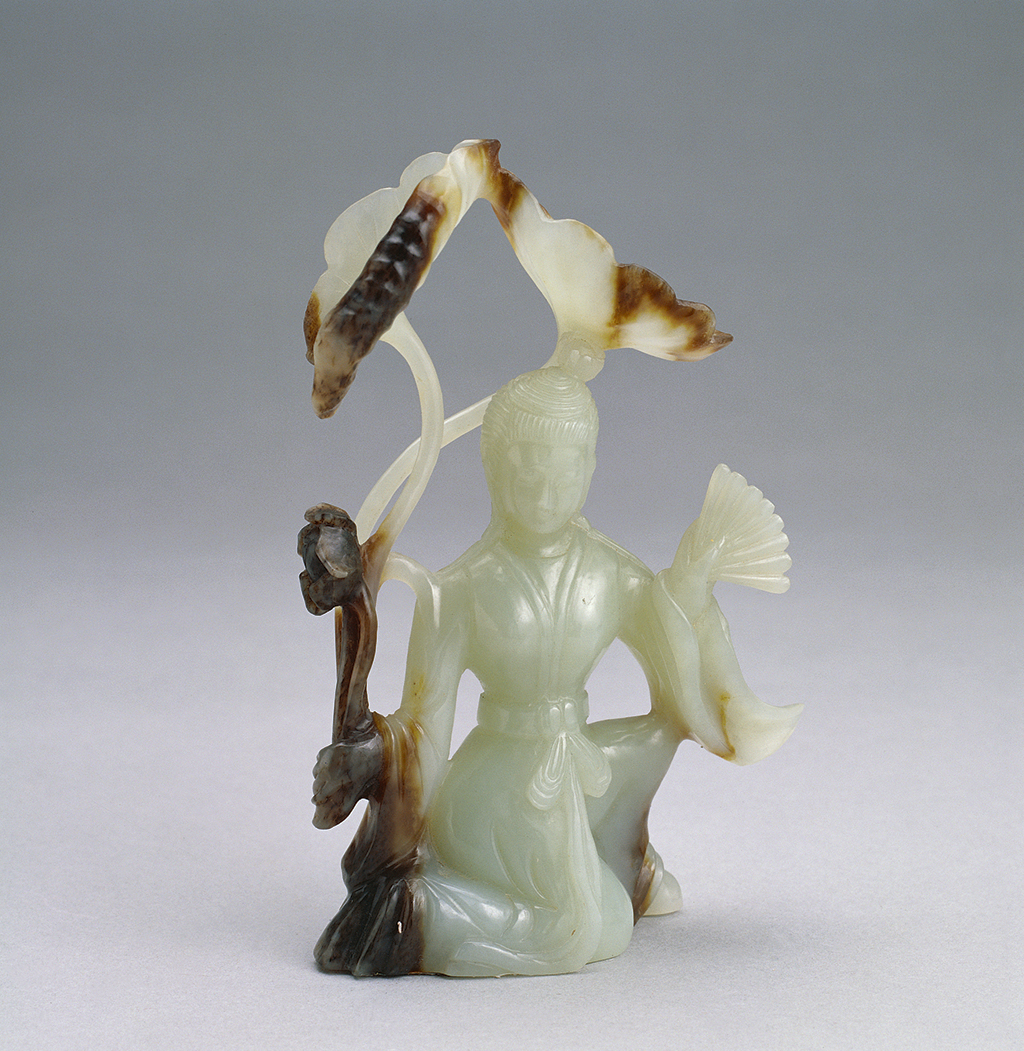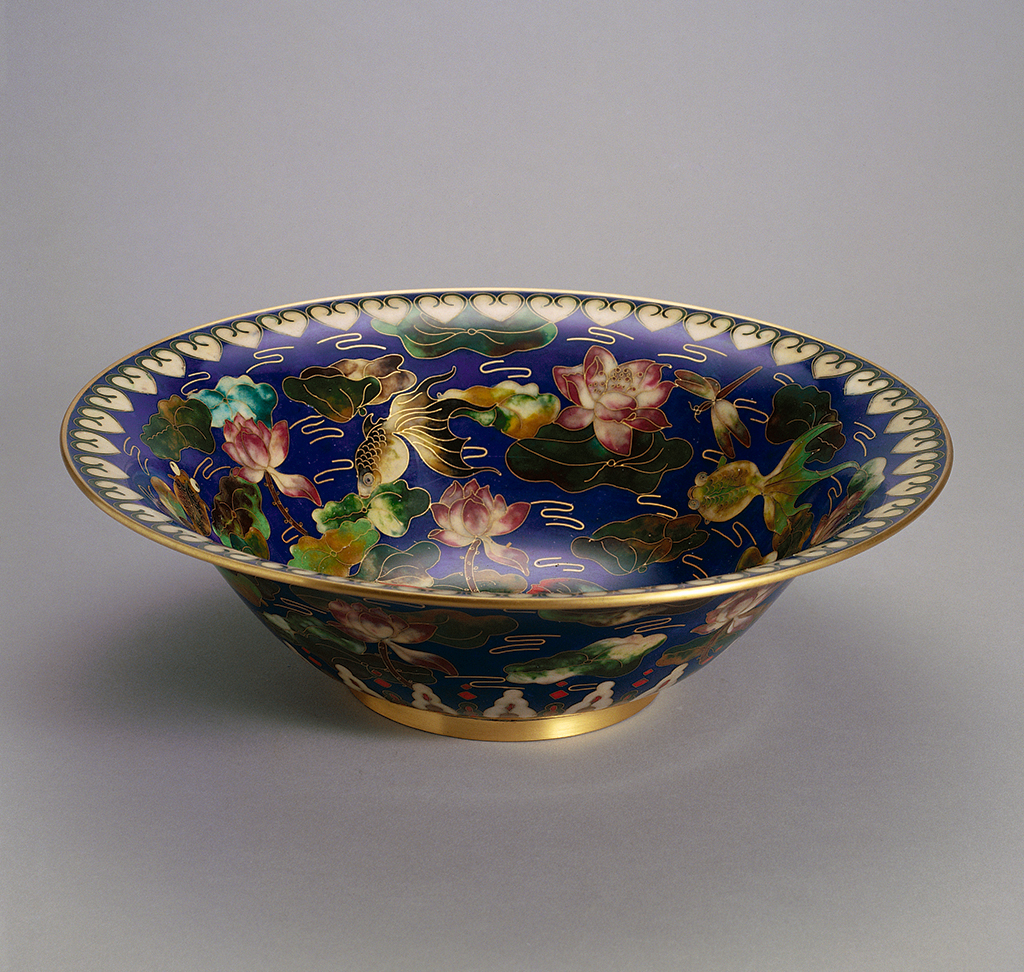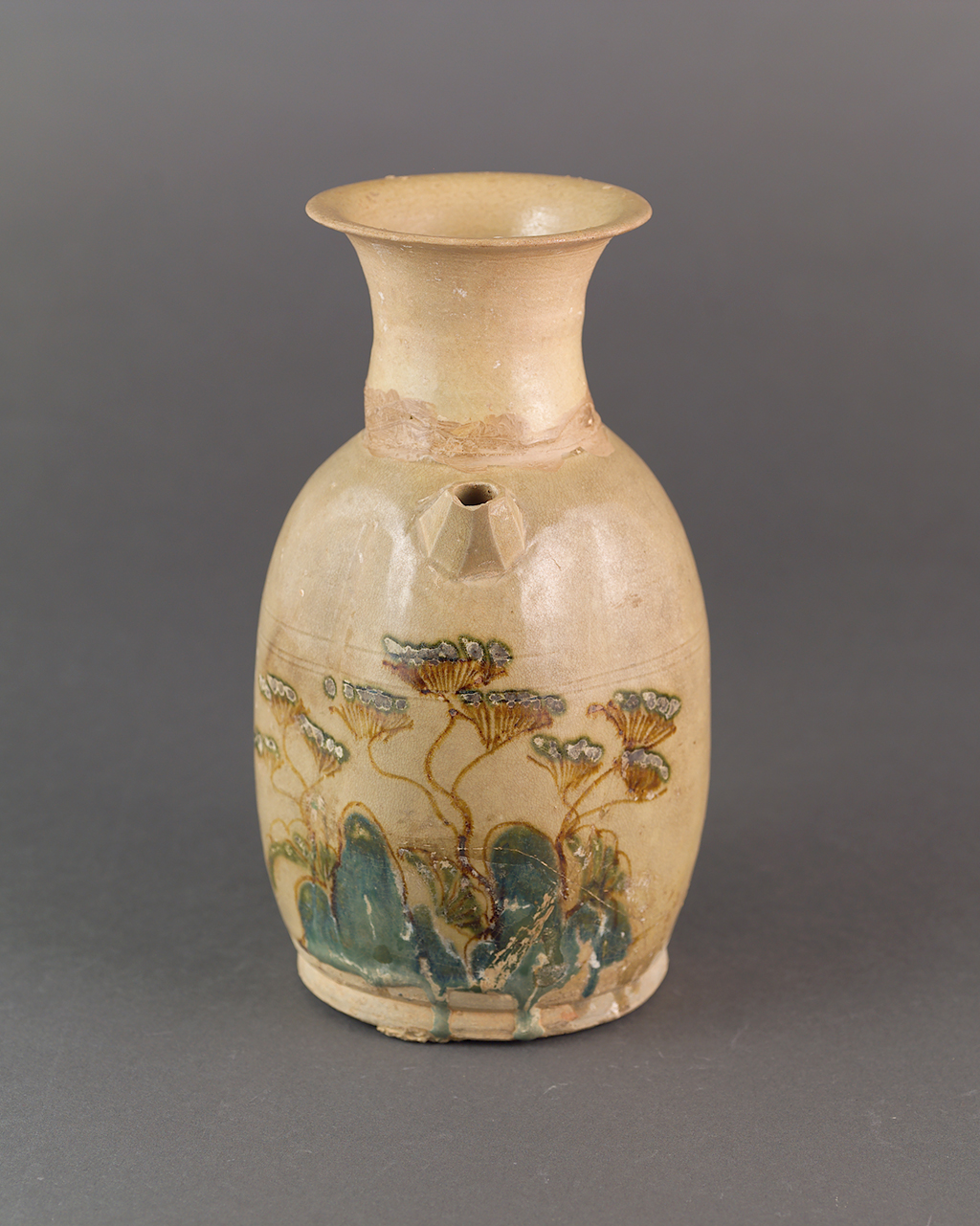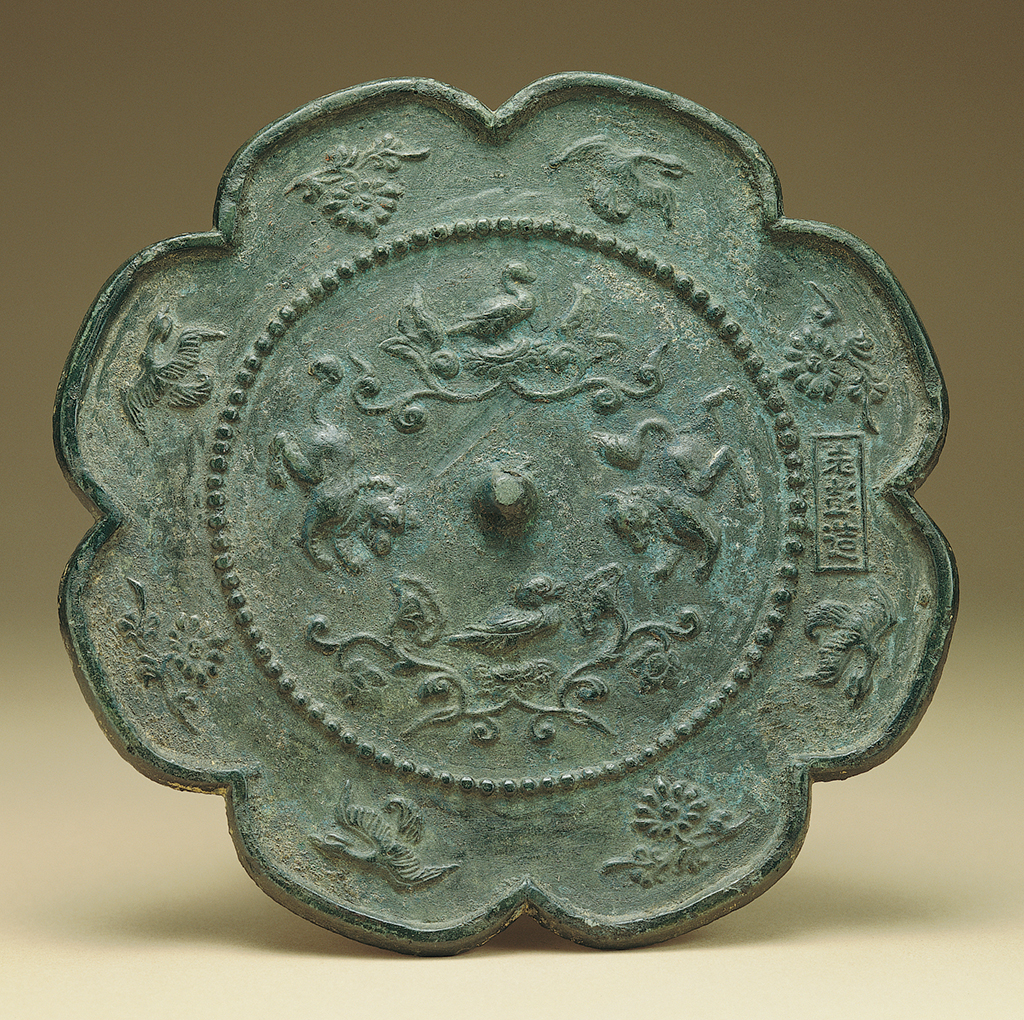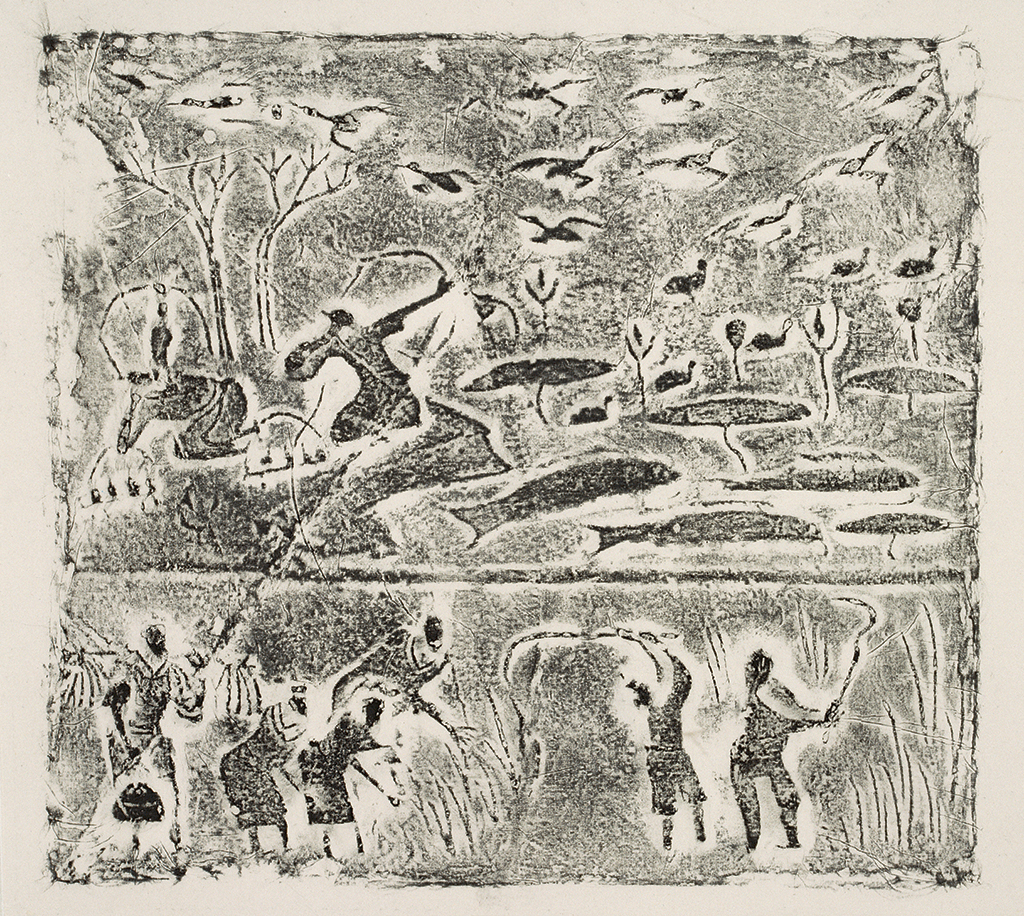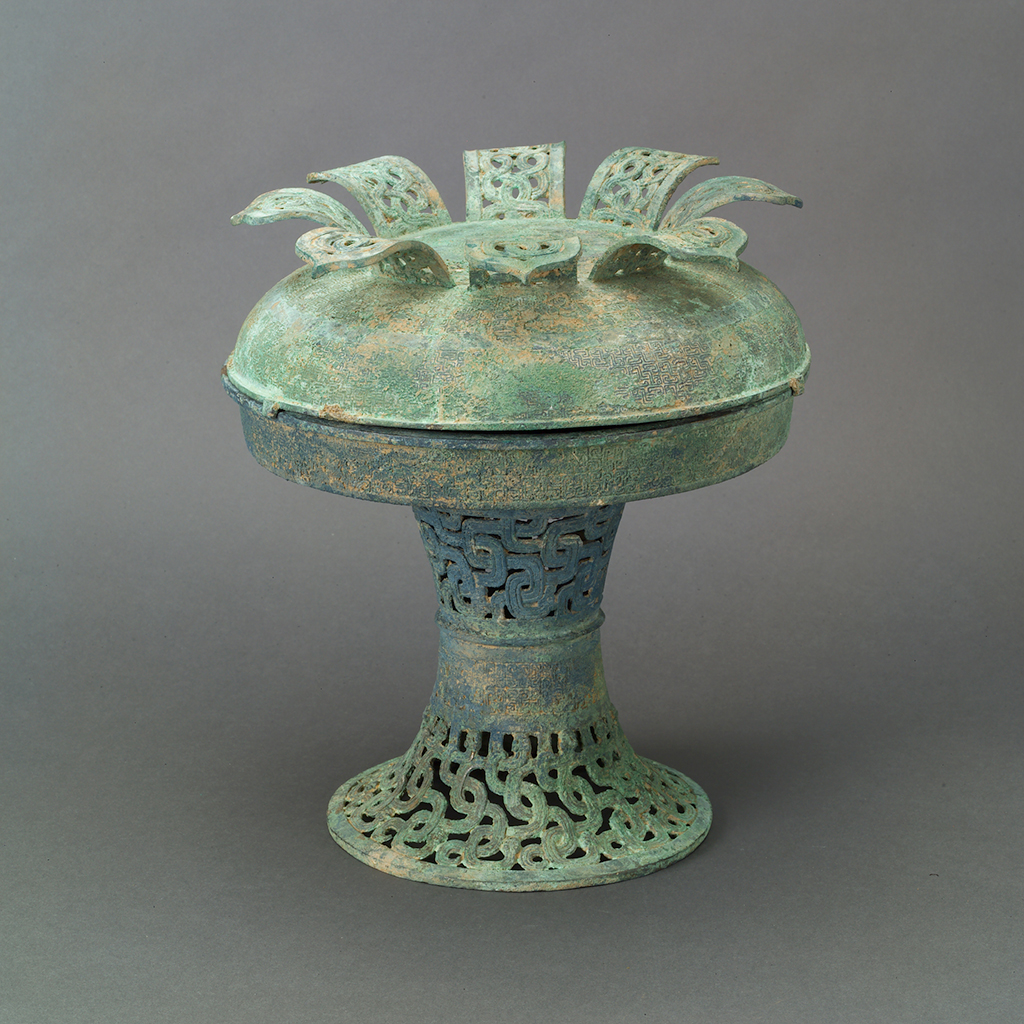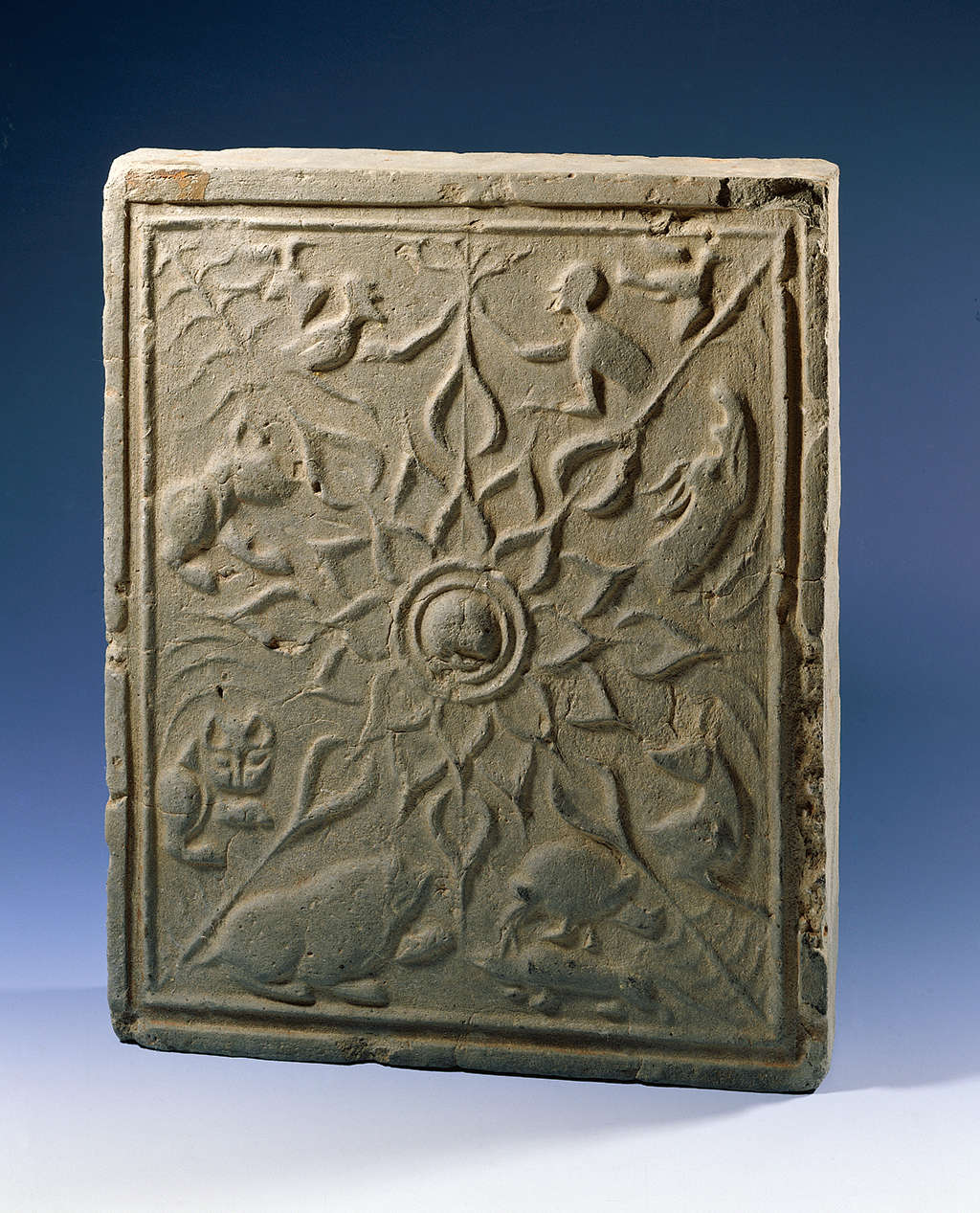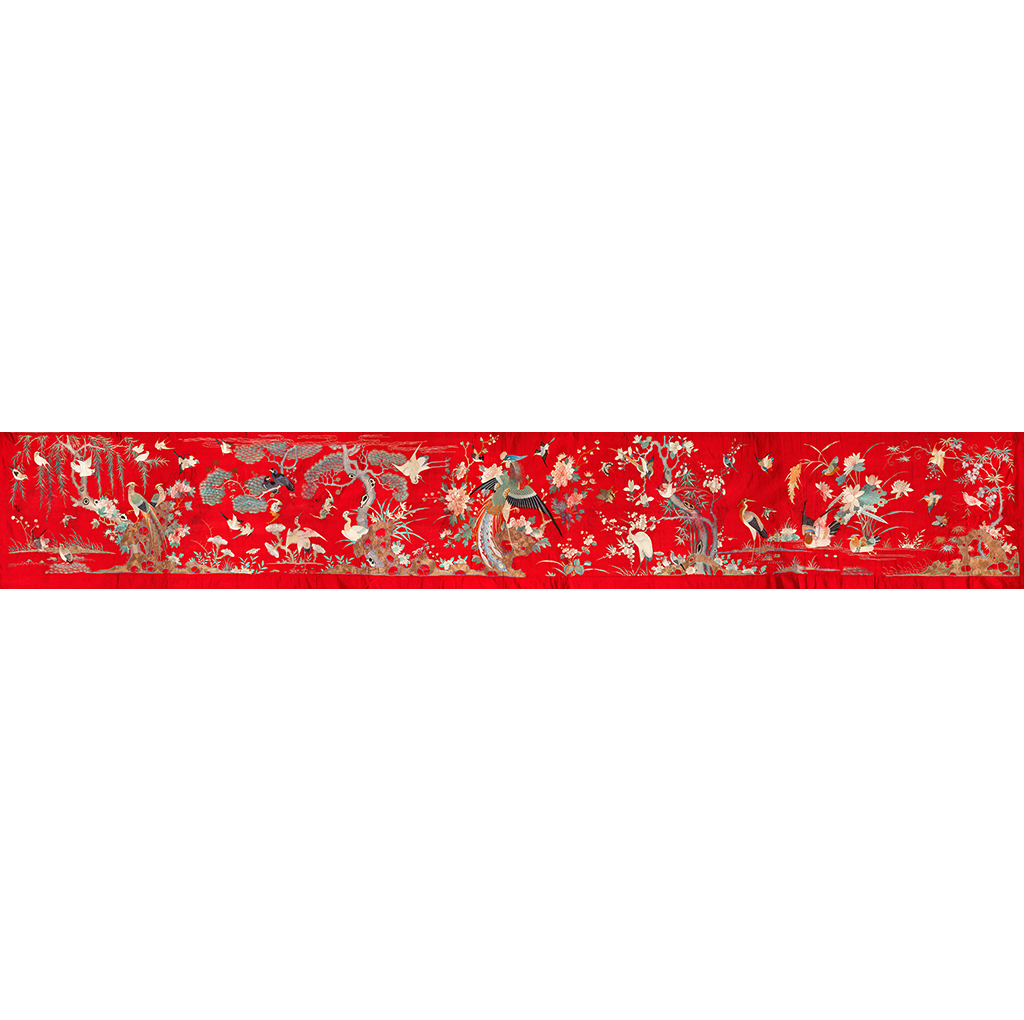Blue and White Lotus Stem PlateCollection number:16-75
This piece is a round, shallow plate. In the center is one lotus stem, encircled by a string of lotus flowers on the edge. A wave pattern adorns the rim of the plate, and the outside also displays lotus flowers. The entire piece exemplifies the rich blue-and-white glaze style of the Yongle period of the Ming Dynasty(1368–1644). The branches are painted with a light touch, while the flowers are gone over multiple times with a thick brush, deepening the color and forming an appealing, bold, and unrestrained effect.
White Jade Immortal with LotusCollection number:34833
In this free-standing sculpture, a woman with hair spiraled on top of her head holds a lotus beside her. She wears a long garment with wide sleeves bound at the waist. Kneeling on her right knee, she twists to the side and holds a fan in her left hand. Two large lotus leaves stand tall above her alongside a blooming flower.
Immortals of Harmony and UnionCollection number:85-00526
This piece is an example of Suzhou Taohuawu woodblock printing. It was made in the traditional style that uses one color per block. This piece would have been given to newlyweds. In the print, two children walk shoulder to shoulder, one carrying a lotus flower while the other carries a box, which are homonyms for "harmony” and "union” in Chinese.
BasinCollection number:75-00040
The base of this basin is a deep blue, while the edge is encircled with white hearts. The main image shows goldfish playing amongst lotuses. The artist used a gradient technique to give a lively and vivid appearance, and employed a rather ingenious use of the "S” shape to depict waves.
Changsha Kiln Lotus Water DropperCollection number:84-00515
This water dropper from the Tang Dynasty is called a zhuzi, which is characterized by an exaggerated mouth, thick neck, flat handle, and short spout. Celadon green glaze was applied to the entire pot except for the base, which is a gray-white color. Everything below the spout is brown with green lotus leaves and stones painted on the surface. The blue-green color of the stones appears to have been added later on. Drips of glaze have rolled to the bottom, and the neck has clearly been repaired.
Tang Dynasty Twin Beasts and Ducks Lotus MirrorCollection number:09798
This bronze mirror is shaped like an eight-petal sunflower with a round, flattened knob in the center. There are two auspicious beasts to the right and left of the knob, both looking downward. Above it, a duck sits on a lotus with two leaves. Below is another lotus and two opposing leaves, with another duck sitting on the plant and facing the same direction as the one above. The inner and outer sections are separated by a raised design that resembles a string of pearls. Mythical birds and chrysanthemums alternate in each of the eight petals. On the edge enclosed in a box, it says "Made by Lao Peng.”
Hunting and GatheringCollection number:78-00023
This brick print includes two scenes. About ⅔ of the brick depicts hunters using ancient rope bows to hunt at a lotus pond. The flowers droop as lotus leaves float on the water and huge fish swim below. Wild ducks swim on the surface. In the sky above, a flock of geese flee in all directions. In the shade of trees on the left edge, two hunters hide: the right one aims at the geese fleeing to the east, while the left one aims at those to the west, both holding their bows at the ready. This scene is paired with a happy harvest below that portrays a prosperous bounty.
Manjushri BodhisattvaCollection number:79-00130
According to the inscription, this paper cut was made in the summer of 1970 by the 79-year-old artist Deng Gong Yunzhang. Deng was devoutly Buddhist and served as a lay devotee under the dharma name Ciren. The bodhisattvas Manjushri and Samantabhadra, which are usually depicted on both sides of the Buddha in Chinese art, are associated with wisdom. Manjushri is often portrayed with five topknots to symbolize the five wisdoms: suchness, awareness, tranquility, discrimination, and compassionate actions. He usually carries a sword atop a lion. In this image, he is enveloped in a white light while riding a lion, with a lotus pond depicted below.
Lidded Pu VesselCollection number:91-00003
The cover for this grain-serving vessel (pu) has eight petals resembling those of a lotus flower. The vessel itself is shallow with a long, hollow stem. The upper and lower parts of the stem are clearly delineated, with the higher part formed from an openwork cross-dragon pattern, and the lower part from an openwork string and snake pattern. The container is decorated with a snake pattern. The lid has a four-circle style that uses the thunder and snake patterns, while the petals are made from an openwork silk pattern. Pu vessels typically use many kinds of decorative patterns on the stem, while the container part is shallow and flat-bottomed. It is often associated with beans, as the Chinese character for bean (豆) has a similar shape. Pu vessels emerged in the middle of the Western Zhou period and were especially prevalent from the end of the Western Zhou until the early Spring and Autumn period.
Water Chestnut Flower Wall TileCollection number:79-00350
In this decorative solid brick tile from the Han Dynasty, simple and flowing half-relief lines are used to create a flower image. The main pattern is a single caltrop flower that extends toward the four corners. Around it are various animals, including a monkey, bird, turtle, and toad. The water caltrop, commonly called the water chestnut, is an annual aquatic plant that often grows alongside the lotus. It is in the Onagraceae, or willowherb, family of plants. The leaves are triangular and have saw-tooth edges, while the stem is filled with air. Its white flowers bloom in the summer and its hard-shelled, mustache-shaped nuts are edible.
Embroidered Scroll with Flowers and BirdsCollection number:29458
The piece was created on a nearly 5 meter-long piece of red silk. It depicts numerous plants, including willows, pines, peonies, and plum blossoms, as well as animals, such as peacocks, white cranes, magpies, mandarin ducks, swallows, and butterflies. Such horizontal embroidery were used to decorate interior halls, and were often hung during significant events such as weddings. The subjects are made vivid by uniform stitching with many hues of thread. Despite the multitude of colors, there is an elegance in its extravagance, making it an exquisite example of Qing Dynasty embroidery.

 View details
View details
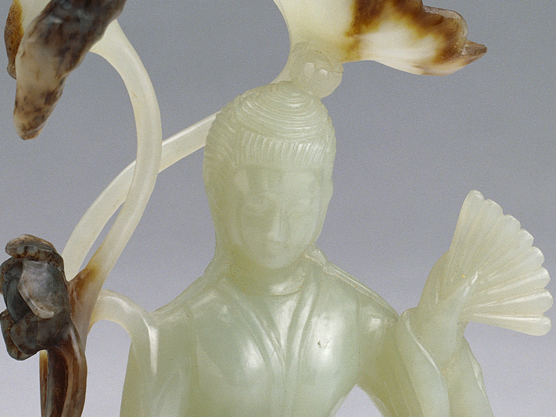 View details
View details
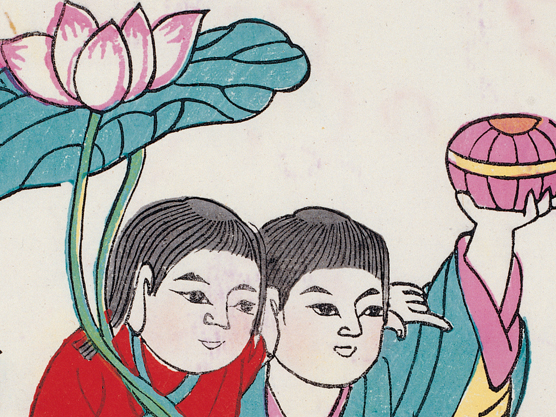 View details
View details
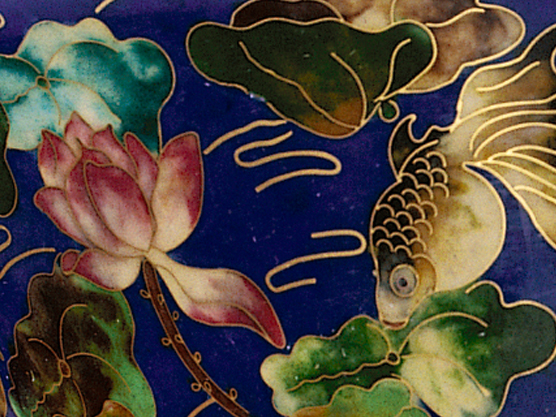 View details
View details
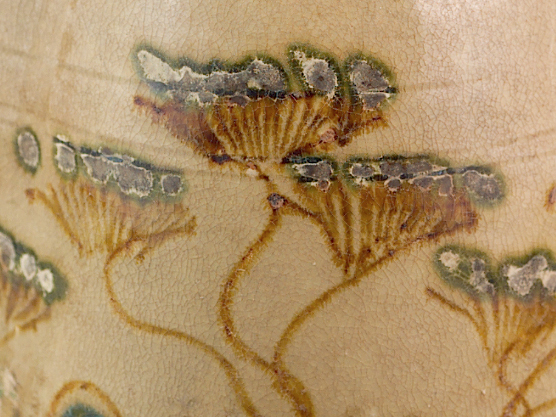 View details
View details
 View details
View details
 View details
View details
 View details
View details
 View details
View details
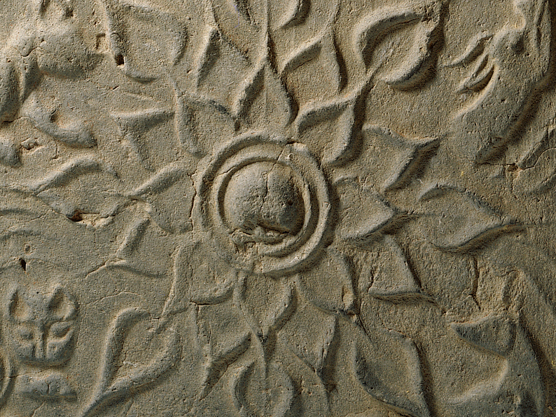 View details
View details
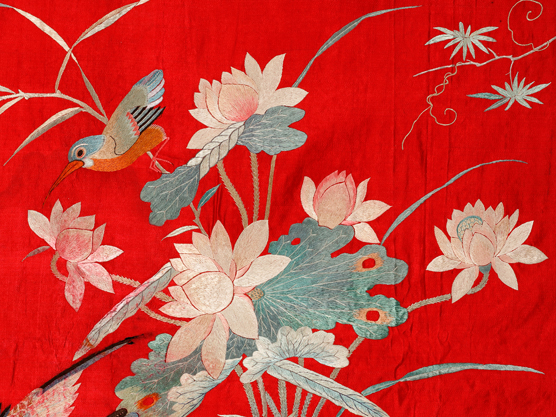 View details
View details

